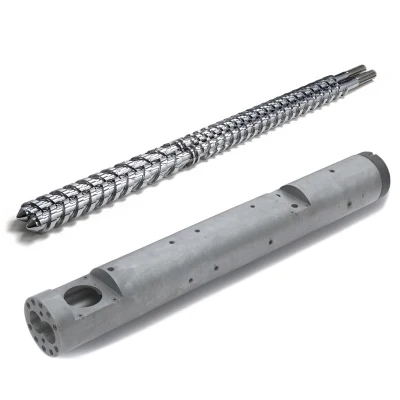We provide custom solutions to all our customers and offer complete technical advices that your company can take advantage of.
As a manufacturer in the industry, you understand the pivotal role that energy efficiency plays in your operations. It's not just a matter of minimizing environmental impact; it's about boosting your competitiveness and profitability. So, let's delve into the nitty-gritty of screw and barrel systems and how to optimize them for energy efficiency based on real-world insights.
The Energy Efficiency Imperative
Let's start with the why. Why does energy efficiency matter so much in the world of screw and barrel manufacturing? The answer is multifaceted.
Cost Savings: Energy costs are a substantial portion of any manufacturing budget. Optimizing energy consumption directly translates to reduced utility bills and enhanced cost-effectiveness.
Sustainability: Beyond cost, there's a growing need for sustainability. Reducing energy consumption means reducing your carbon footprint. This not only aligns with global sustainability goals but can also enhance your company's image.
Quality and Productivity: Energy-efficient systems tend to operate more smoothly. This reduces downtime, minimizes waste, and ensures a consistently high-quality output.
Assessing Energy Efficiency
Now, let's get into the specifics of assessing your screw and barrel setup's energy efficiency. Consider these factors:
Screw and Barrel Design: The heart of your operation. The design has a substantial impact on both energy efficiency and product quality. Look at things like the flight depth, compression ratio, and channel depth. For example, a case study from a leading manufacturer revealed that optimizing the pitch and channel depth led to a 15% reduction in energy consumption and a 10% increase in extrusion rate.
Material Choices: The materials you use for your screw and barrel components matter. Heat dissipation and friction play a significant role in energy consumption. An example from a real manufacturer showed that switching to a higher thermal conductivity material reduced energy consumption by 8% and extended the system's lifespan.
Temperature Control: Precise temperature control is vital. Outdated or poorly maintained heating and cooling systems can lead to substantial energy wastage. A real-world study demonstrated that a well-maintained, modern temperature control system reduced energy usage by 12% while maintaining product consistency.
Maintenance: Regular maintenance is often underestimated. A case study by a major manufacturer highlighted that a proactive maintenance schedule reduced unexpected downtimes due to system malfunctions by 40% and led to a 7% reduction in energy usage.
Process Control: Implementing a real-time process control system can significantly optimize energy consumption. In one instance, a manufacturer reported a 20% reduction in energy consumption by implementing an automated system that adjusted parameters based on real-time data analysis.
Taking Action
If you've identified areas where your screw and barrel setup can be more energy-efficient, it's time to take action. Consider collaborating with experts in the field, who can assess your specific setup and provide tailored solutions. Upgrading to energy-efficient components and integrating smart control systems can lead to substantial, data-backed energy savings over time.

